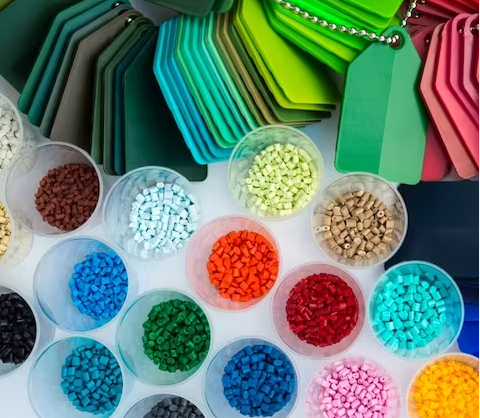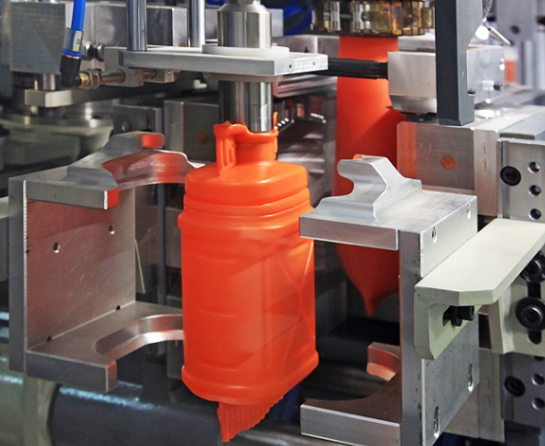Yes, injection molding is the most commonly used process for manufacturing a wide range of plastic products due to its efficiency and versatility.
Overview of Injection Molding in Plastics Industry
This process involves heating plastic pellets to their melting point, followed by injecting the molten plastic into a mold under high pressure.
Definition and Basic Process of Injection Molding
The core principle of injection molding is the conversion of plastic pellets into a fluid state and molding them into desired shapes. The process begins with feeding plastic pellets into a hopper, which leads to a heating chamber. The molten plastic takes the shape of the mold, cools, and solidifies rapidly. The mold then opens to eject the finished product.

Comparison with Other Plastic Molding Techniques
Injection molding stands out for its efficiency, precision, and ability to produce complex shapes. To further understand its significance, a detailed comparison with other plastic molding techniques, such as blow molding, extrusion, and thermoforming, is essential.
| Feature | Injection Molding | Blow Molding | Extrusion | Thermoforming |
|---|---|---|---|---|
| Process | Melting plastic and injecting into a mold | Inflating heated plastic into a mold | Pushing melted plastic through a die | Heating plastic and shaping over a mold |
| Applications | Complex parts, e.g., automotive components | Hollow parts, e.g., bottles | Long, continuous shapes, e.g., pipes | Thin-walled containers, e.g., packaging |
| Materials | Wide range, including ABS, Polyethylene | Primarily Polyethylene, PVC | Broad spectrum, including HDPE, LDPE | Mainly amorphous plastics like PS, PVC |
| Efficiency | High throughput, precise control | Suitable for high-volume production | Continuous process for long runs | Fast for thin sheets, less material wastage |
| Cost | Higher initial investment but low per-part cost | Moderate setup cost, economical for large volumes | Low tooling cost, economical for long runs | Lower mold cost, suitable for smaller runs |
| Quality | High precision, excellent finish | Good for uniform wall thickness | Consistent cross-section quality | Variable quality, dependent on tooling |
| Advantages | Excellent dimensional accuracy, high production rate | Ideal for hollow parts, uniform wall thickness | Continuous production, high material efficiency | Cost-effective for large parts, design flexibility |
| Limitations | Limited to relatively small parts, high tooling cost | Only for hollow shapes, limited design complexity | Limited to uniform cross-sections | Not suitable for high-detail or high-strength parts |
Materials Used in Injection Molding
Injection molding is a process that heavily relies on the use of various plastic materials, each offering unique properties and advantages for different applications. The selection of materials is critical for achieving desired product characteristics such as durability, flexibility, and resistance to environmental factors.
Types of Plastics Suitable for Injection Molding
- Acrylonitrile Butadiene Styrene (ABS): ABS is known for its toughness and impact resistance. It is widely used in automotive components, toys, and consumer electronics. The cost of ABS varies but generally remains affordable, making it a popular choice for a wide range of applications.
- Polyethylene (PE): PE comes in high-density (HDPE) and low-density (LDPE) forms.
- Polypropylene (PP): PP is appreciated for its fatigue resistance and elasticity. PP is cost-effective and offers a good balance between chemical resistance, elasticity, and toughness.
- Polycarbonate (PC): Known for its transparency and impact resistance, PC is used in applications requiring transparency and high strength, such as eyewear lenses and bulletproof glass. However, PC can be more expensive than other plastics, reflecting its superior qualities.
Properties of Commonly Used Plastics in Injection Molding
- ABS: ABS typically has a melting temperature of around 200°C and offers good resistance to physical impacts and chemical corrosion.
- HDPE: HDPE has a melting point around 130°C to 136°C. Its resistance to moisture and most chemicals makes it ideal for outdoor use.
- LDPE: LDPE melts around 105°C to 115°C. It is most valued for its flexibility and low-temperature resistance, which is crucial in packaging applications.
- PP: PP has a melting point of about 160°C to 170°C. It stands out for its fatigue resistance, essential for products that undergo regular bending and flexing. PP is also resistant to many chemical solvents, bases, and acids.
- PC: PC melts around 225°C to 250°C. Its high impact resistance, coupled with its clarity, makes it a unique choice for demanding applications. However, the material cost and processing requirements are higher compared to other plastics.
Injection Molding Machines and Equipment
Injection molding machines are complex assemblies, designed to efficiently manufacture plastic parts by injecting molten material into a mold. Understanding their components and the latest innovations in technology is crucial for optimizing the injection molding process.
Components of Injection Molding Machines
- Injection Unit: This is responsible for melting and injecting the plastic into the mold. Clamping Unit: The clamping unit holds the mold in place during the injection and cooling process. It must provide sufficient force to keep the mold closed against the high pressure of the injected plastic. This unit includes the mold itself, platens, and a clamping system.
- Control System: Modern injection molding machines are equipped with advanced control systems for precision and repeatability. These systems regulate temperature, pressure, injection speed, and clamping force, ensuring consistent product quality.
- Hydraulic System: This system powers the machine’s moving parts, particularly in traditional injection molding machines. It controls the movement of the screw in the injection unit and operates the clamping unit.
- Electric Drive: In electric injection molding machines, servo motors are used for precise control of the injection unit and the clamping system. This results in higher efficiency and better precision compared to hydraulic systems.
Innovations in Injection Molding Technology
- Advanced Control Algorithms: These include predictive maintenance and real-time monitoring, enhancing machine efficiency and reducing downtime.
- 3D Printing Integration: The integration of 3D printing in mold fabrication accelerates the production of prototypes and complex mold designs.
- Eco-Friendly Technologies: Development in energy-efficient machines and use of sustainable materials like bioplastics are becoming increasingly popular.
- Automation and Robotics: The use of robots for tasks like parts removal and assembly improves production speed and consistency, while reducing labor costs.
- Customizable Software Solutions: Software advancements allow for more precise control over every aspect of the injection molding process, adapting to specific material properties and design requirements.

Applications of Injection Molding in Various Industries
Injection molding has become a cornerstone in manufacturing, offering unparalleled versatility and efficiency. Its applications span across multiple industries, each exploiting the unique advantages of this process to meet specific requirements.
Use in Automotive Components
Interior and Exterior Parts: Injection molding is extensively used to create a variety of automotive parts, including dashboards, bumpers, door handles, and light housings. These components benefit from the high durability and excellent finish that injection molding offers.
Under-the-Hood Components: Many under-the-hood parts like air intake manifolds and engine covers are also produced using injection molding. The process allows for the creation of parts that can withstand high temperatures and chemical exposure, essential in automotive applications.
Cost-Effectiveness: In the automotive industry, reducing production costs while maintaining quality is crucial. Injection molding allows for high-volume production with a low per-unit cost, significantly impacting the overall budget in large-scale manufacturing.
Customization and Precision: Automotive parts often require high precision and customization. Injection molding enables the production of parts with complex geometries and tight tolerances, meeting the demanding specifications of the automotive industry.
Consumer Goods and Household Applications
- Electronics: Injection molding is vital in producing components for electronic devices, including mobile phone cases, television frames, and computer peripherals. These products require high precision and aesthetic appeal, which injection molding readily provides.
- Household Items: Many everyday items such as plastic utensils, containers, and toys are produced via injection molding. The process’s ability to produce large quantities efficiently makes it ideal for these commonly used items.
- Material Flexibility: Consumer goods often require different types of plastics based on the product’s function and aesthetics. Injection molding accommodates a wide range of materials, from rigid plastics for structural components to soft plastics for items requiring flexibility.
- Cost and Efficiency: For consumer goods, maintaining a balance between cost and quality is essential. Injection molding offers a cost-effective solution, especially for high-volume production, ensuring products are affordable for consumers without compromising on quality.
Challenges and Solutions in Injection Molding
Injection molding, despite its many advantages, comes with its own set of challenges. Understanding these challenges and implementing effective solutions is crucial for maintaining the quality and efficiency of the process.
Common Defects in Injection Molded Products
Warping: Warping occurs when different parts of the molded item cool at different rates, causing distortion. This is often due to uneven cooling or excessive material temperature.
Sink Marks: Sink marks are small depressions or indentations on the surface of molded products. They typically occur in thicker areas where the outer shell hardens before the inside cools, causing the surface to cave in.
Flash: Flash refers to excess thin layers of plastic that seep out of the mold cavity, usually due to excessive injection pressure or poor mold fit.
Strategies for Improving Quality and Efficiency
Optimizing Mold Design: A well-designed mold minimizes defects like warping and flash. This involves ensuring uniform wall thickness and adequate cooling channels.
Material Selection and Preparation: Choosing the right material and preparing it correctly, including proper drying and maintaining the right temperature, is essential for reducing defects like short shots and sink marks.
Process Control and Monitoring: Implementing advanced control systems for monitoring temperature, pressure, and injection speed helps maintain consistent quality throughout the production run.
Regular Maintenance and Training: Regular maintenance of the injection molding machine and training staff to recognize and troubleshoot common issues can significantly improve the overall efficiency of the process.




